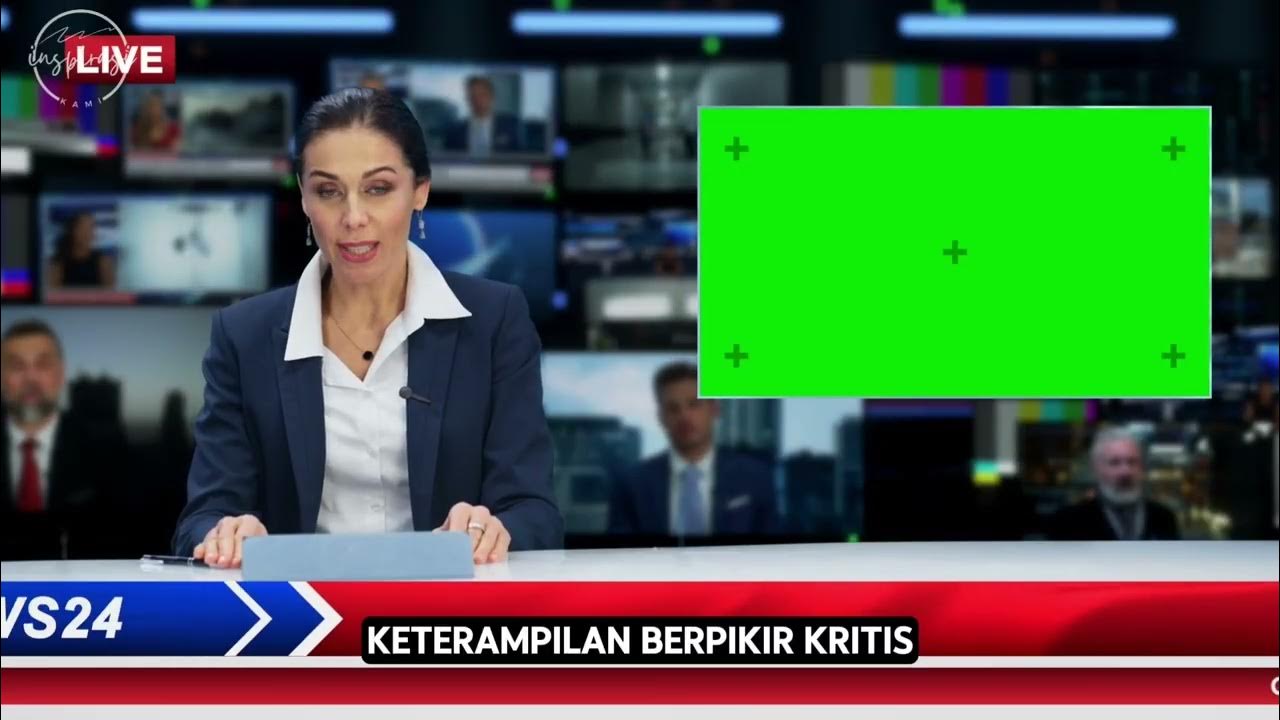35. Literasi Digital - Menyaring Konten Negatif di Dunia Digital - Informatika Kelas X
Summary
TLDRThis educational video focuses on the importance of digital literacy, particularly in filtering negative content online. It explains how to identify and manage harmful materials such as hoaxes, hate speech, misinformation, and cyberbullying. The video encourages critical thinking, verifying sources, and responsible sharing of information. It emphasizes the significance of digital ethics, safety, and the collective responsibility to create a positive and safe digital environment. The goal is to equip children with the tools necessary to navigate the digital world wisely, ensuring that they understand the potential risks and how to avoid them.
Takeaways
- 😀 Digital literacy is essential for effectively navigating and filtering digital content.
- 😀 The spread of negative content, such as misinformation, hate speech, and cyberbullying, is a challenge in the digital age.
- 😀 It is important to verify the authenticity of information before sharing it on social media.
- 😀 Sensational or viral content is often more easily trusted, even without verifying its truth.
- 😀 Recognizing signs of negative content includes sources that are unclear, sensational headlines, and emotionally charged language.
- 😀 The impact of negative content can lead to confusion, psychological harm, social polarization, and a decline in public discourse quality.
- 😀 Steps to filter negative content include checking the credibility of sources, verifying information, and using fact-checking tools.
- 😀 Digital literacy encompasses the ability to think critically, differentiate between fact and opinion, and maintain ethical behavior online.
- 😀 It is essential to engage responsibly by communicating wisely and reporting harmful content.
- 😀 Using tools like Google Fact Check and social media reporting features can help in filtering and managing negative content online.
Q & A
What is the main topic of the lesson in the script?
-The main topic of the lesson is about filtering negative content in the digital world, with a focus on how to be critical and responsible when consuming information online.
Why is it important to filter negative content in the digital world?
-It is important to filter negative content to prevent the spread of harmful information such as misinformation, hate speech, and cyberbullying, which can lead to confusion, psychological harm, and societal conflict.
What are some examples of negative content mentioned in the script?
-Examples of negative content include fake news (hoaxes), hate speech, cyberbullying, and inappropriate content like pornography or violent materials.
What types of negative content are discussed in the script?
-The types of negative content discussed include fake news, misinformation, disinformation, clickbait, and provocative content that stirs negative emotions.
What is the impact of negative content on individuals and society?
-For individuals, negative content can lead to confusion, loss of trust in information, and mental distress. For society, it can increase polarization, social conflict, and reduce the quality of public discourse.
What are some ways to identify negative content online?
-To identify negative content, look for unclear or anonymous sources, sensational or provocative headlines, a lack of valid evidence or data, and emotional language meant to manipulate the reader.
What steps can be taken to verify the accuracy of information?
-To verify information, check the credibility of the source, compare the information with multiple trusted sources, and use fact-checking tools like Google Fact Check or Snopes.
What is the role of digital literacy in filtering negative content?
-Digital literacy helps individuals understand, analyze, and use technology responsibly by enabling them to critically evaluate information, distinguish between facts and opinions, and act ethically in the digital world.
What are the tools and platforms that can help filter negative content?
-Tools such as fact-checking websites (Google Fact Check, Snopes) and social media reporting features can help filter negative content. Browsers also have settings to block harmful websites.
What is the significance of critical thinking in filtering online content?
-Critical thinking allows individuals to assess the validity of information before accepting it as truth. It helps avoid believing sensational or misleading content and ensures that individuals make informed decisions based on factual data.
Outlines

This section is available to paid users only. Please upgrade to access this part.
Upgrade NowMindmap

This section is available to paid users only. Please upgrade to access this part.
Upgrade NowKeywords

This section is available to paid users only. Please upgrade to access this part.
Upgrade NowHighlights

This section is available to paid users only. Please upgrade to access this part.
Upgrade NowTranscripts

This section is available to paid users only. Please upgrade to access this part.
Upgrade NowBrowse More Related Video

O que é Letramento Digital?

pentingnya literasi digital di era modern

Understanding "DIGITAL SECURITY" (Digital Security - Informatics Subject Element 2 Digital Literacy)

Literasi Digital | Materi Informatika/TIK SMP Kelas 7

Pecandu Judi Online Berbagi Kisah, Apa yang Bikin Sulit Berhenti Judi?

Kurikulum Merdeka Rangkuman PPKN Kelas 8 Bab 6 Literasi Digital dalam Kebinekaan Bangsa
5.0 / 5 (0 votes)